The Article
Harold Budd: Powered By Rothko
9th December 2020
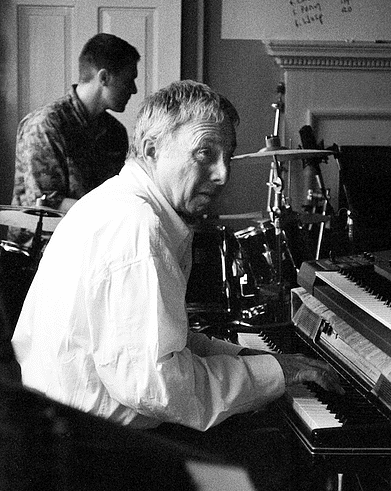
Harold Budd’s collaborative ventures have not only made him a better artist but, says Paul Rigby, have also enriched his life
[NOTE: We recently received the sad news of the passing of composer, Harold Budd from complications due to the coronavirus at the age of 84. He was a talented and unique artist who often merged the avant with the popular to provide a gateway of exploration for many. Including myself. He once talked to me about Brian Eno and said, “I owe him everything.” Yet in musical terms, we all owe a debt of sorts to Harold Budd. I was fortunate to interview Harold Budd a few years ago. As a personal tribute, please allow me to represent that interview here, in full…]
His poignant performance on Ambient, Vol.2: The Plateaux Of Mirror (1980) with Brian Eno. His collaboration with the Cocteau Twins on the uplifting The Moon And The Melodies (1986). His starkly arctic solo outing on The White Arcades (1988). All of these masterly performances feature the keyboard-lead ambience of Harold Budd. Only, they don’t.
He’s not a pianist.
“No, I cannot play the piano,” said Budd. “I can play what I play, I can play me, but I have a dyslexia when reading music. I’m not a professional musician. I hack away at it and the piano is convenient. By no means would a proper pianist consider me one.”
And he doesn’t play ambient music.
“The word ‘ambient’ doesn’t ring a bell with me. It’s meant to mean something but is, in fact, meaningless. It’s not relevant for me. My style is the only thing I can do well. I don’t think about genres. I don’t think about labels, they don’t have meanings.”
But look, if you walked up to the guy in a bar and said, ‘Hey Harold, love the ambient music,’ he’d disagree with you there and then and possibly dampen your joie de vivre into the bargain but no more. Cheerfully bounce up to the man in the same bar and praise his ‘New Age’ music, though, and he’ll put you in traction.
“Twenty years ago, I was labelled ‘New Age’ which absolutely infuriated me. I didn’t go on a shooting rampage or anything like that and, in comparison, the word ambient doesn’t upset me. ‘New Age’, on the other hand, that really got to me. It pissed me off.”
So what and who is Harold Budd? He was very nearly a cowboy. Not really a John Wayne type. Budd is rather too slender and lacks the requisite gait for that job but his childhood spent in Victorville, on the southwestern edge of the Mohave Desert region of California, could have driven the young Budd down a different path.
“I was going to go to an agricultural college to be a farmer or rancher. Boyhood fantasy. Not too far fetched. At that time, I wanted to drive a car, shoot a gun, ride a horse…the desert was a blank canvas.”
This was ‘just before’. Just before he realised that the desert was robbing him of the awareness of the outside world and its many riches and just before he discovered that maverick talents could make a difference. People like Orson Welles and Jackson Pollock didn’t live in places like Victorville.
“Victorville was a small, shitty little desert town. Now, it’s a big, shitty desert town. Those days are not missed.”
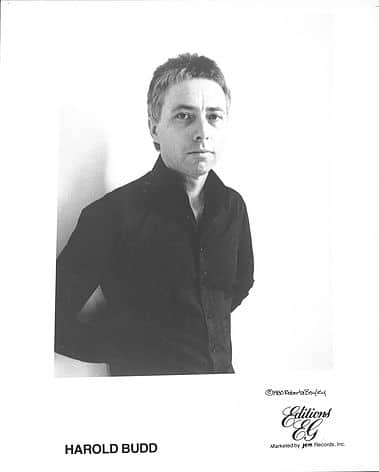
Oh and just in case any amateur psychologists out there decide to equate the desert emptiness, the multi-tonal silence, the vast space and the sky that went on forever with his musical development — think again.
“Absolutely not,” asserted Budd. “No, no, no. I respond to great architecture, great painting and so on. I respond to stimulation and then re-interpret that in my own way.”
Musically speaking, jazz was Harold Budd’s first love and his first introduction to art. Although his attempts at jazz drumming were a disappointing cul de sac, his subsequent Army draft would change that.
“For me it was a life changing time,” said Budd. “I had no education and no money. I had nothing. The army saved me. I looked around me and I thought, ‘I’d better get my ass together to make me a different person.’ It was the best thing that ever happened to me.”
After the draft, Harold Budd joined the Army band. What are the odds that another draftee, joining at the same band, would be a jazz legend? Stand up, Albert Ayler. It was lottery time for Budd.
“He was a dear friend. Whilst in the Army, we would do gigs in the likes of Monterey for $25 a night. He didn’t tell me what he would play and I went with the flow. I didn’t have the chops to really pull it off but I had the will.
“It was challenging for Ayler to be in an Army band because it was straight-laced and conservative. He had a hard time because a lot of the band members were also conservative and well-schooled musicians. They thought he was producing bullshit. He felt the hostility to his particular brand of playing. I knew what he was feeling, which helped a bit. I can see him talking to his friends, ‘Believe it or not, there’s white guy who actually likes what I do!’”
It broke Budd’s heart when he eventually left the Army band to enrol in college. Ayler wanted him to stay in touch, around the Army base, so that they could continue to play.
But the move proved useful for Budd’s evolution. Enrolling in Harmony and Counter-Point classes at College, Budd found the avant-garde.
“I thought, Jesus Christ! What’s going on here? I heard a piece, by Arnold Schoenberg, with Benny Goodman playing the clarinet part and that just astonished me. I’d never heard music like that before in my life and I realised how lame I was and how much I desperately had to learn to make up for lost time. If I was still a jazz musician there wouldn’t have been any of that. I came from a background that had zero interest in anything intellectually challenging. As soon as I learned how deficient I was, I had an overwhelming desire to learn everything at once.”
During the late 60s, this interest took flight within an early work. Oak Of The Golden Dreams was inspired by Terry Riley. Budd utilised the large, Moog-like, Buchla Electronic Music System while working as a composition teacher at the newly formed California Institute of the Arts.
“It was a dead end, though,” opined Budd. “I look back on those times, knowing that I was searching for my own language. I had left the avant-garde by that time. I wasn’t interested in John Cage, chance music and all that stuff.
“I thought that world was bankrupt. Even worse, it was boring. That is a sin to me, that ‘none engagement’. I considered the scene and thought, ‘Do something interesting!’ Which, apparently, they were incapable of doing.”
“I then had the good fortune to meet the Abstract Expressionist, artist, Mark Rothko. He asked me my age. I replied, ‘In my early 40s’. Rothko said, ‘I didn’t make a living until I was over 50.’ We sat around looking at the paintings that would eventually become the Rothko Chapel in Houston. We were sitting around smoking and drinking Scotch. [Avant-garde musical innovator] Morton Feldman, was with us too, talking about life, booze and chicks. So I thought, ok, I’ll stick it out. Rothko gave me encouragement.”
Harold Budd’s career effectively began with a phone call from Brian Eno. Composer, Gavin Bryars (or his colleague, composer, Michael Nyman: histroy has yet to decide) handed Eno a taped live performance of Budd’s 1972 recording of Madrigals Of The Rose Angel. A glittery piece of wordless female voices, harps and percussion.
“One evening, in 1975, he called on the phone and asked if he could bring me over to London to record four pieces that eventually showed up on The Pavilion of Dreams (that was recorded in 1976 but released in 1978). I felt embarrassed about this because I then had to call my friend at a record store and ask who on earth Brian Eno was! Brian was such a generous guy. He was perfectly accommodating and had the producer skills on those recordings. Soon after that, I saw the studio as a compositional tool. That was purely down to Brian.”
It was at this time when Budd began to consider his creative lot. Would he make a success of his art? Would he even make a living from it? If not despair, then a frustrating uncertainty began to envelop Budd.
The sublime The Moon And The Melodies, with the Cocteau Twins, was the result.
“I met Robin Guthrie through Ivo Watts Russell, the founder of 4AD. We went to a Cocteau Twins gig, Elizabeth Fraser’s voice was remarkable, then went backstage to meet them. They initially wanted to only cover one of my pieces, from the Eno collaboration, The Plateaux Of Mirror, but we eventually decided on recording an album of new work together. I developed my friendship with Robin Guthrie there and then. It took about a month of daily work in the studios to do Moon…. There was a very good pub nearby, in White City, I remember, which I took scandalous advantage of, I must say.”
Harold Budd returned to the USA, awaiting the release of the album and grew increasingly agitated. He was convinced that, to further his art and his career, he should move to England and cut his ties with California. He received backing from friends in the USA and Brian Eno in the UK.
“I remember having my 50th birthday party, sitting in a Mexican restaurant and saying to my then wife that this was never going to happen again: everything, life, marriage, work, the lot. So, terrible person that I am, I split. I came to a sudden realisation. If I had not have got my ass out of there I was going to die. So I left. I could only physically do that because Brian Eno had extended an invitation to stay with him and friends in Lanzarote. But the trigger, apart from Rothko, was the period I spent with the Cocteau Twins. At that time I thought: I see it, I get it, I’ve woken up.”
By 1990, he was back in the USA, however. It was the old story, Harold Budd loses girl, Budd flies back to LA to find himself, Budd finds new girl, instead, Budd makes album with Bill Nelson. It’s happened to us all.
By The Dawn’s Early Light featured Budd ‘treating’ a piano for the first time. That is, stuffing it with horse blankets to create that muffled sound.
“It was an odd bunch to get together and the ensemble didn’t appear out of the air. I mulled that group for some time. I could think of Bill Nelson, he was a given. Bill plus who, though? The lady who played harp used to be my girlfriend. I then wanted a pedal steel guitar in there so I called BJ Cole. I have a weakness for country: Waylon Jennings and so on. It’s a really good sound. I wanted a viola – I hate the violin, it squeals – so I asked the viola player from the New Orleans Symphony Orchestra, Mabel Wong.”
Budd the composer and arranger sprang forth because his girlfriend and Wong could only read music and had no improvisational skills whereas BJ Cole could only read chord changes and was better at improv and Bill Nelson could only work via an improv style.
“There’s risk with that situation. In my world, there is no such thing as risk-free art. I like the aspect of danger, like it’s all going to fall apart but it seldom does,” said Budd.
Currently, Budd is working on Jane, another collaboration. This time with video artist, Jane Maru.
“I made 11 pieces in a studio here in South Pasadena and began with no plans, no notes, no titles. Nothing. A complete blank slate. Which is not what I would normally do. The music is out now.”
Check out haroldbudd.com, although the site was going through some reconstruction the last time I looked.
“I just plugged into something that was full of joy. My wife died of brain cancer but, with this recording, my sadness as a widower was gone. I broke away from it and started again. It was new. I loved doing it. So much, in fact that I’ve already started the second album, the sequel.”
The collaborative instinct in Harold Budd should not be underestimated for it has layered and strengthened Budd’s own style. When working with others, he admits that, “I’m a visitor…period. I don’t subscribe to their music as being necessarily inspiring to me. I pop in from some other planet and hang out for a while. That’s it. Yet, I have, in each instance, learned so much that I feel guilty. I would like to be in a position to repay them for how much they have freely given to me. They have completely enriched my artistic life.”
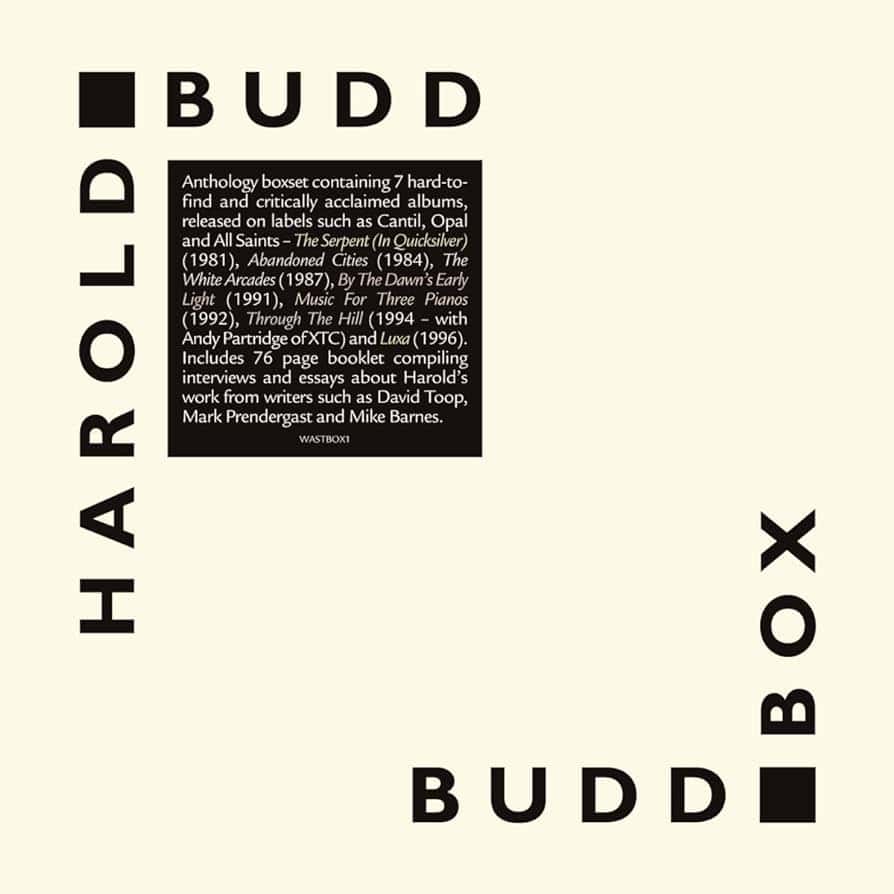
THE BUDD BOX SET – OVERVIEW
Despite sounding like a pack of lager that you’d pick up at a supermarket, this collection of seven Harold Budd albums offers a welcome array of classic and comparatively rare pieces that offer a valuable cross-section of Budd’s work.
THE SERPENT (IN QUICKSILVER) (1981)
“I look at this album with great pride. It was one of the smartest things I ever did. I didn’t wait for things to happen, I went ahead and did it. I recognise myself. I found my language with this album.”
ABANDONED CITIES (1984)
“Both tracks were created for and art installation for, artist, Lita Albuquerque. It was a task. I was asked to produce the music. I was taking advantage of my inclination to be melancholy. It’s my natural state.”
WHITE ARCADES (1988)
“The only album I did as an ex-pat, living in London and commuting to Edinburgh. It took me six months. I mixed part of one track at Brian Eno’s studio and another at the Cocteau Twin’s studio in White City. But it was essentially a solo work, I loved doing it. It made a difference that I created it in the UK, although it’s hard to quantify how.”
BY DAWN’S EARLY LIGHT (1991)
“Poems? Yes, it was my first shot at doing poetry. I spoke them on the album. A couple of years earlier, I wouldn’t have had the courage. I started writing poems not too far before I recorded the album. I didn’t expect to use them at all. It was a hunch to use them. They were spoken lyrics to the music. Why speak them and not sing them? Another hunch.”
MUSIC FOR 3 PIANOS (1992)
“I wanted my two friends: Daniel Lentz and Rubin Garcia to get recorded on an album that somebody would hear. Daniel has been my best friend since we met in 1969. Rubin passed away last year from acute alcoholism. I promised him for years that we’ll make an album together but I kept forgetting. Daniel had made several albums, he wasn’t completely unknown but this was a great start to make an album with him. In the end, it turned out to be an EP of around 20 minutes. A full album just wasn’t there so I stopped.”
THROUGH THE HILL (1994)
“This was a collaboration with [XTC songwriter] Andy Partridge. He’s so witty. I ended up just laughing my ass off all of the time. He’s very sharp. [Budd then spends many seconds laughing, just at the memory of Partridge] What a sweet man. We spent time in his shed…just laughing. A strange album? I agree. It’s difficult to explain why except to say that it’s out of my normal style. It was a refreshing change.”
LUXA (1996)
“Titles are very important to me. From them come the music ideas. A good piece can be ruined by an awful title. I think of Luxa more as a decorative thing. An art term. From there, the music insinuated itself.”
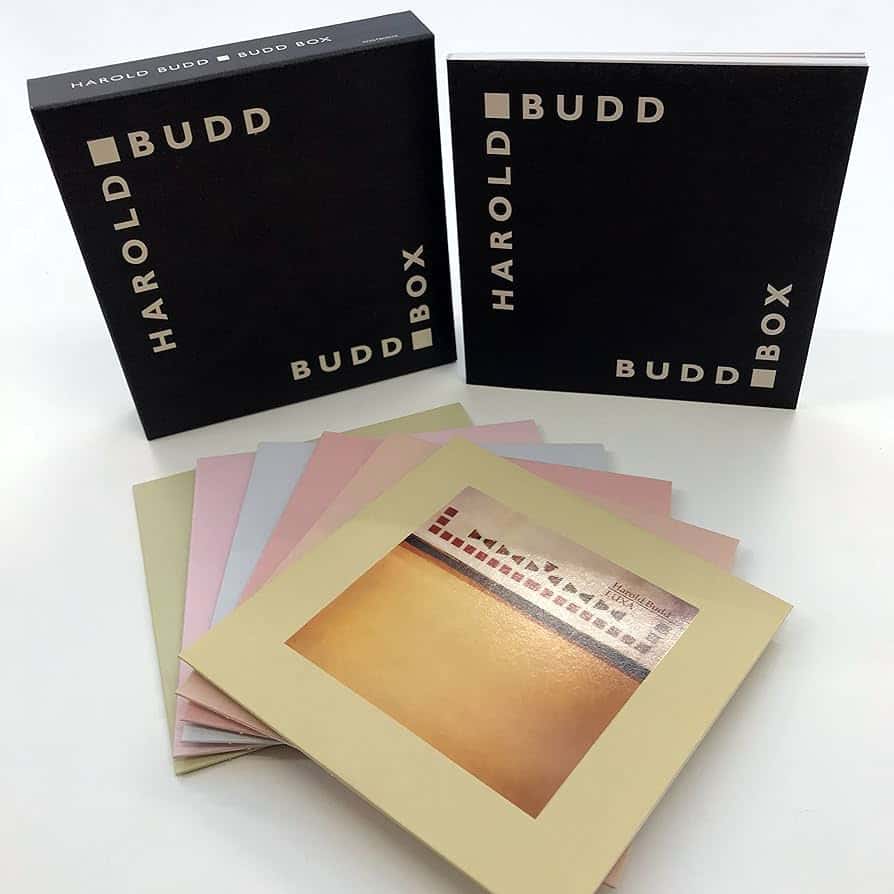
HAROLD BUDD ON…
ANDY PARTRIDGE
“I must say, when my wife became ill from brain cancer, there were many psychological problems that were produced. Eventually, we broke up. I was living alone in Joshua Tree around 2006, not a good place to be alone. Andy would call me weekly and commiserate, ask me how I was doing. Friendship-type stuff. He really kept me afloat during a terrible part of my life. God bless him.”
BRIAN ENO
“In many respects, and I say this from the bottom of my heart, I owe him everything. He gave me courage and an introduction to my own language.”
BILL NELSON
“I noticed that my accent changed when I lived in the UK. I remember training it up to see Bill Nelson for dinner with his family and his wife said that that I had a very posh accent. That pleased me but it was somewhat surprising.”
ROBIN GUTHRIE
“When I was working on The White Arcades, I was travelling to Edinburgh. Great pubs up there. The people were great too. I remember Robin Guthrie giving me valuable advice,
‘You’ve got to learn two things. Firstly, how do you pronounce Edinburgh?’
‘Edinboro.’
‘No. It’s Edinbr-a.’
‘Right, ok.’
‘OK, when you go to a pub, what do you order?’
‘A pint of bitter.’
‘No. You order a pint of heavy.’
I thought, right – thanks. Then I fitted right in. I even went to the bank and changed my cash to Scottish paper money.”
DAVID SYLVIAN
“You say that he’s an obvious, yet missing, collaborator but David is on a quest that’s completely personal. I don’t think that I should butt in. Even if I was asked, I think it should happen on it’s own terms. He is going to a place that I am not part of. I admire it as an artist – everything he does. But it’s best if he continues on his quest alone. He’s an artist whose language is changing so radically that it’s really a language that he has to develop on his own. He has close companions that belong with him but I’d rather have a view than be a participant.”

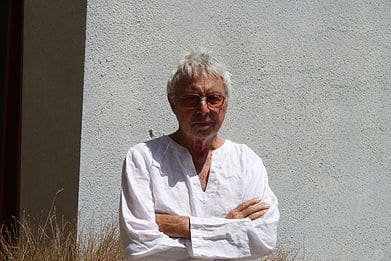
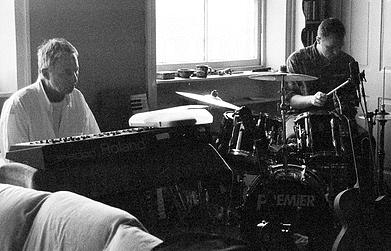
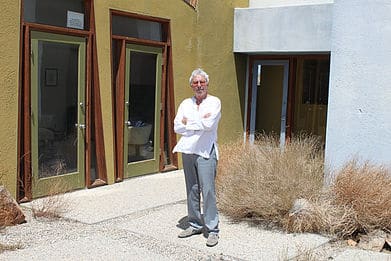

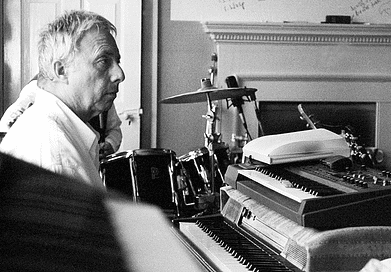
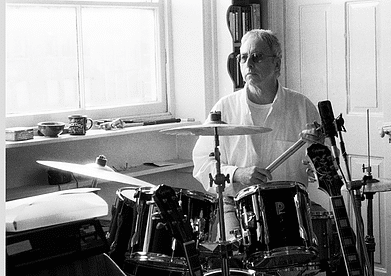
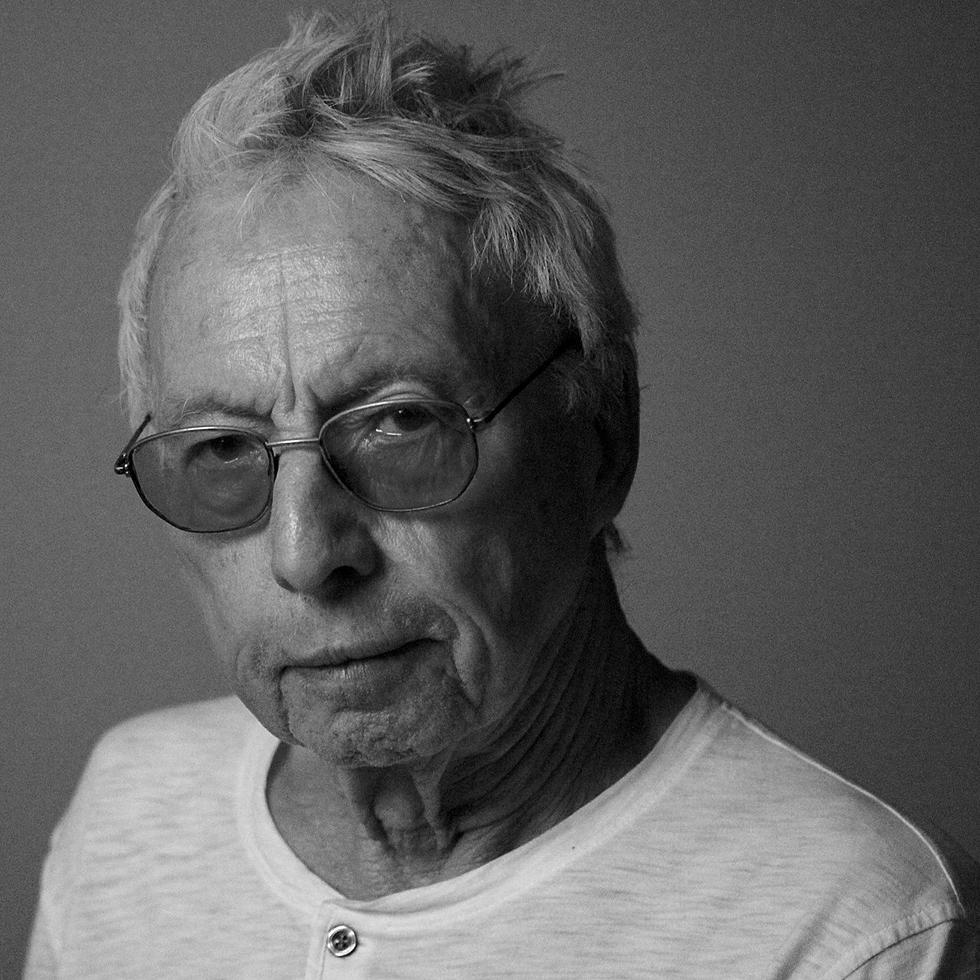
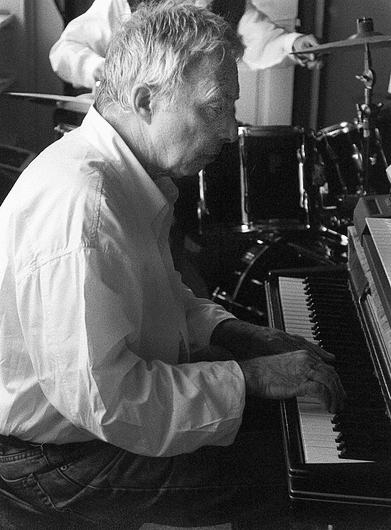
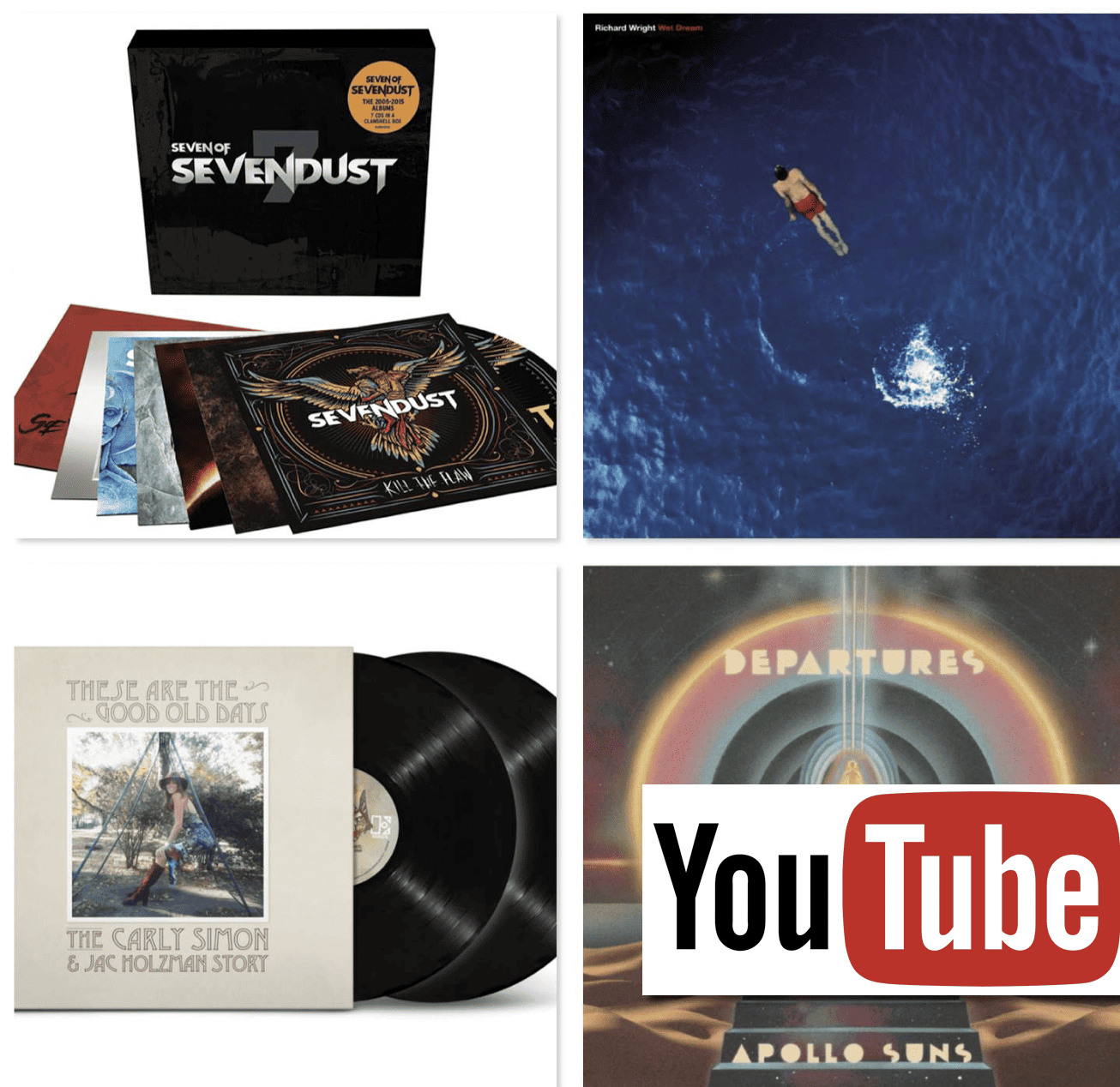
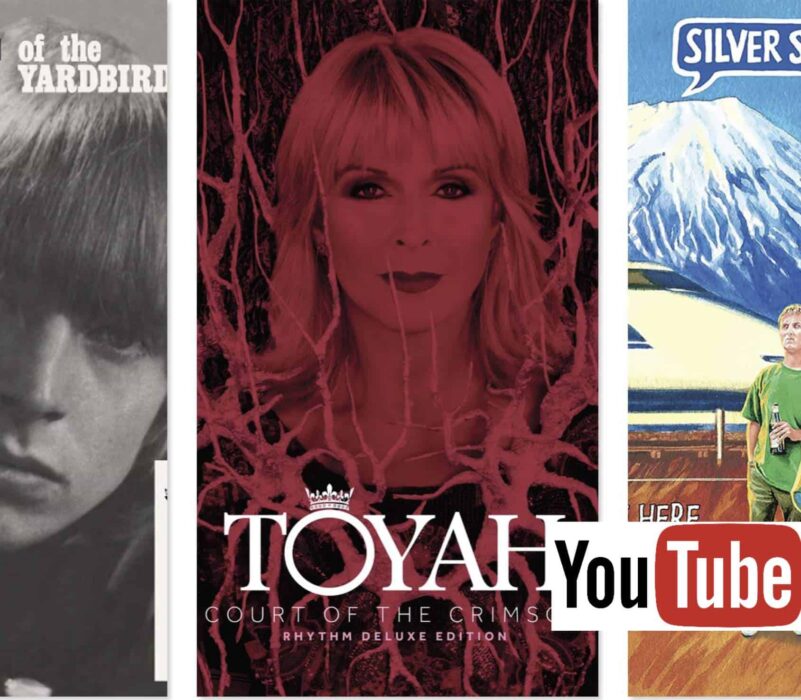
Thank God for the “You Might Also Like” section! Otherwise I’d never have found your exquisite piece on Budd. And it is exquisitely honest too. My favourite Lp of his is the James Tenney memorial solo recital where he doesn’t ‘play’ the piano 😉 That particular rendition is one of my special piano ‘go to’ recordings; Stunningly captured by Justin Jones and an absolute master class in silence and reverie.
Another one is his sublime quartet Lp ‘Bandits of Stature’ – brilliant title! Look, I love ALL of his music and count myself lucky that I ‘get’ what he does. Every sentiment expressed by him in your article might as well be about me too lol! But…….I could never get into his Cocteau phase or even his collaborations with Robin G.
It also strikes me that I only have real affection for self taught pianists/musicians. I remember going to a recital by a renowned pianist who ‘showed off’ her inconsiderable skills on the ivories. I was aghast at my total lack of interest in the proceedings! I felt absolution no emotion whatsoever. Null and void. What a lesson I learned that night!
Now how about a little piece on Roedelius? Or even Tim Story üé∂
Thanks for your kind comments Dermot – very nice of you. Interesting points you make there and, yes, good suggestions too for future interviews.
You’re so welcome Paul. People should never be afraid to dabble in this vast thing called MUSIC. No genres. No prejudice. Just the sound of music intermingled with the music of sound. One side at a time üòä
Ol√°, Paul, tudo bem? Excelente entrevista, e uma bela homenagem compartilh√°-la neste momento triste para a m√∫sica… Eu apresento um programa de radio web e farei uma edi√ß√£o especial falando sobre ele. Eu poderia mencionar alguns trechos com os devidos cr√©ditos? Grata! Best wishes… Silvia
Sure, with due credit, that would be fine. Send me a link if you can, when it’s out.
Paul, thank you SO MUCH for sharing this. I just stumbled across it today and learned of his passing here. Harold Budd is hands down my favorite composer and more people should be exposed to his wonderful body of work. I have read many little bits about him in the past but this was such a fulfilling read and window into the person; I chuckled and cried in equal measure. Is it a coincidence he collaborated with Rothko and the Cocteau Twins, artists I also love? I think not. RIP, Mr.Budd, may the “Wind In Lonely Fences” be at your back.
That’s very kind of you Martin and yes, it was a great loss to us all.
I loved Mr Budd music, sad news. His music was so pure.
RIP Mr Budd.
As a man who maintained a friendship with Harold for nearly thirty years, I must say that reading this interview deeply moved and touched me. Alongside many things I already knew or discussed with him, I found the freshness and simplicity of his language, his disenchanted way of seeing things that I so appreciated. I believe this is the best way to remember him. Thank you.
Well that’s very kind of you to say, Alessandro. And thank you for reading.